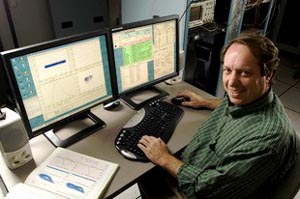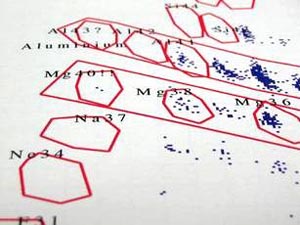Things have got heavy for aluminium and magnesium with the synthesis of three previously unseen isotopes of these elements by researchers in the US.
It’s been a longstanding project since the beginning of nuclear science to establish what isotopes can exist in nature, said Dave Morrissey of Michigan State University’s National Superconducting Cyclotron Laboratory, NSCL. Isotopes of an element share the same chemistry because they have the same atomic number and electron count but they differ in the number of neutrons in the nucleus and so have a different atomic mass.

Dave Morrissey
This subtle difference makes some isotopes less stable to radioactive decay than others because the extra neutrons in the nuclei disturb the forces holding the nucleus together.
The new results represent new landmarks on the nuclear landscape, suggesting that heavier isotopes of other common light elements might exist. This result suggests that the limit of stability of matter may be further out than previously expected, adds Morrissey, really, it shows how much mystery remains about atomic nuclei. The results could help fill in some of the gaps in our understanding of nuclear forces and help predict whether super heavy elements with as yet unknown physical properties might exist.

Isotopic colouring book, lab notes on the discovery of three super-heavy isotopes of magnesium and aluminium.
One property that remains a mystery is the neutron-limit, or neutron-dripline. Despite more than a half-century of inquiry, scientists only know the limit of how many neutrons can be loaded into each element’s nuclei for the eight lightest elements from hydrogen to oxygen. There are 100 or so elements in the periodic table, which amounts to a large mass of missing information.

Particle identification plot from the NSCL experimenters’ logbook, shows the discovery of magnesium-40
The NSCL loaded extra neutrons into aluminium and magnesium to successfully create magnesium-40, with 12 protons and 28 neutrons; aluminium-42, 13 protons and 29 neutrons; and aluminium-43, 13 protons and 30 neutrons. Unfortunately, these isotopic rarities only exist long enough to be fleetingly observed. Nevertheless, their existence possibly extends the neutron-dripline to as far as magnesium and possibly beyond.
The discovery bucks the theoretical trend, which suggested that aluminium-42 should not exist and hints that the dripline is skewed to more novel, neutron-rich isotopes. This could help extend nuclear theory and point the way to future experiments.
Further reading
Nature, 2007, 449, 1022-1024;
http://dx.doi.org/10.1038/nature06213
National Superconducting Cyclotron Laboratory homepage
http://www.nscl.msu.edu
Suggested searches
isotopes